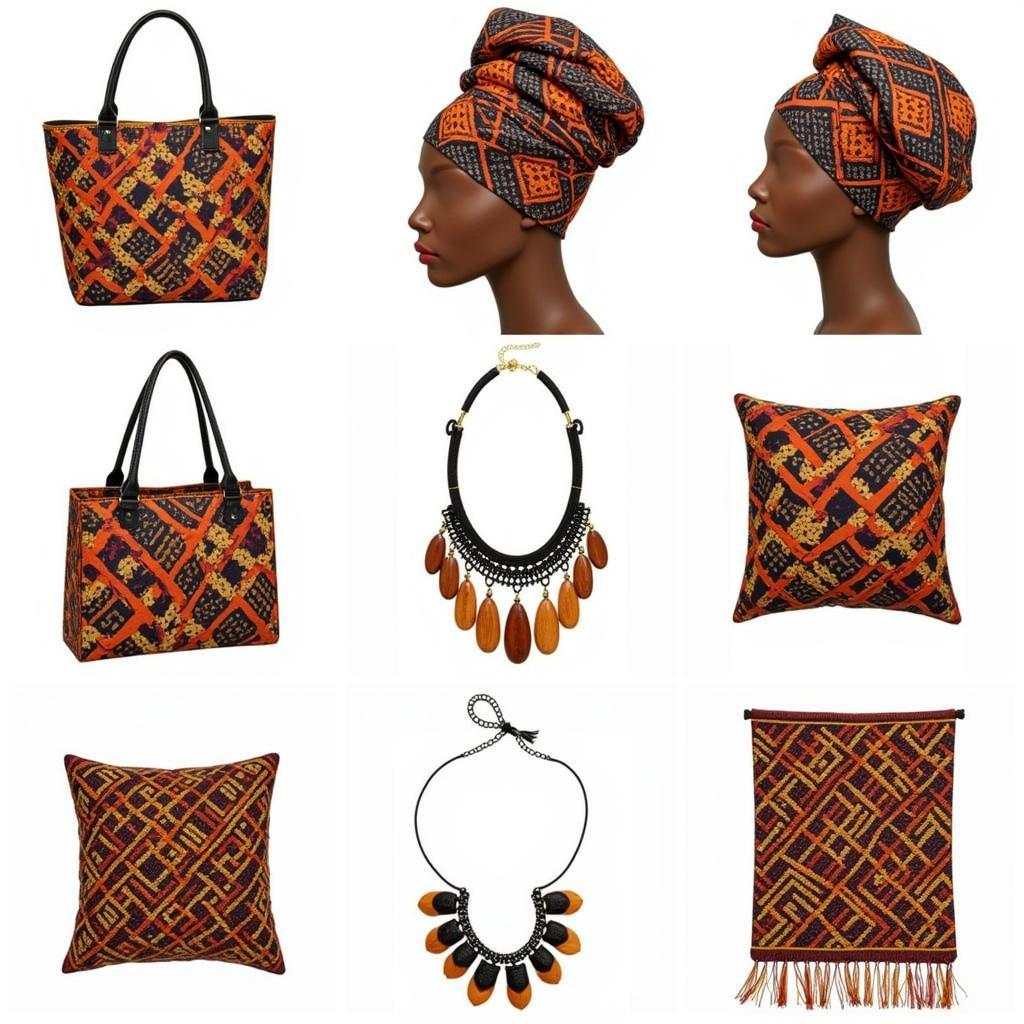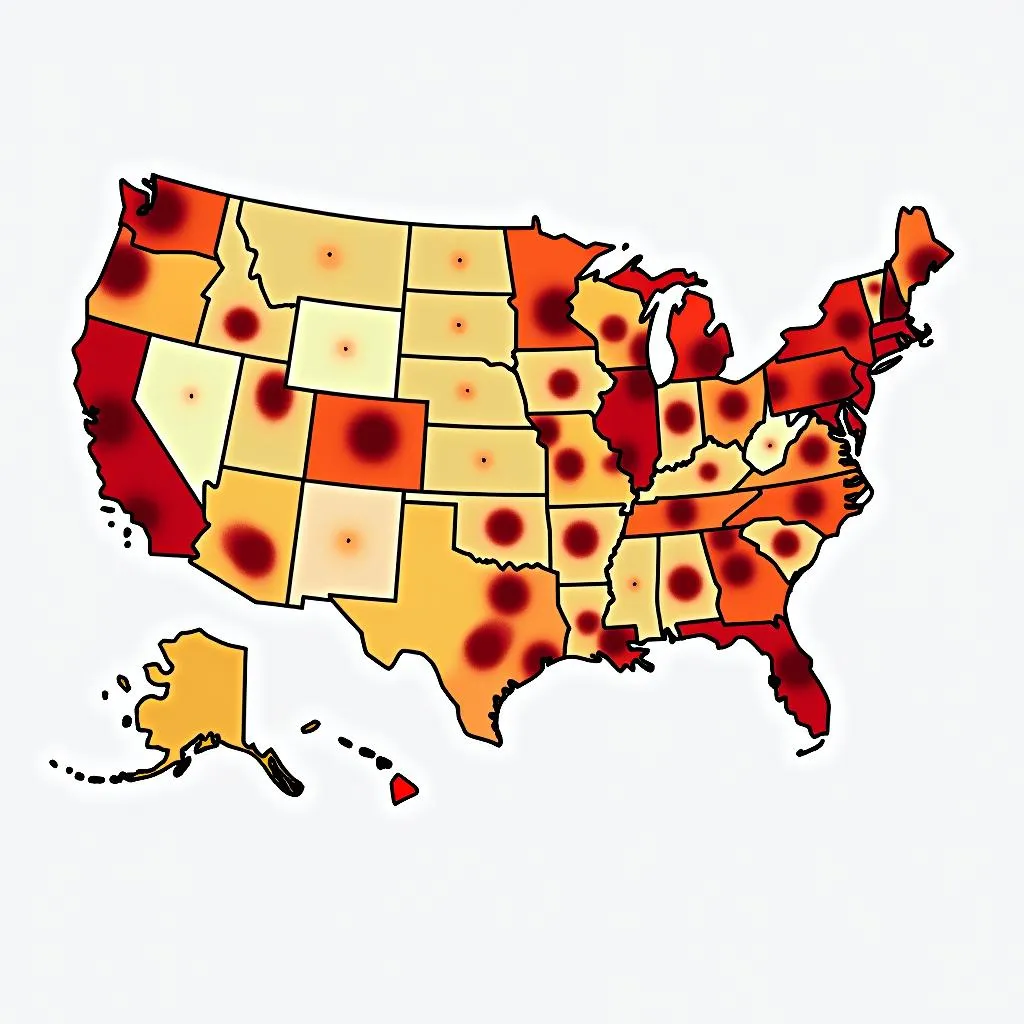African Kitenge Fashion: A Vibrant Celebration of Culture
African kitenge fashion is more than just clothing; it’s a vibrant expression of culture, history, and identity. From its humble beginnings as a simple wax print to its current status as a global fashion phenomenon, kitenge continues to evolve while retaining its deep-rooted significance in African communities. This article delves into the fascinating world of kitenge, exploring its origins, diverse styles, and growing influence on the international fashion scene.
The History and Origins of African Kitenge Fashion
Kitenge’s journey begins in Indonesia in the 19th century, where it was initially produced as imitation batik. However, the East African coast quickly embraced these colourful fabrics, adapting them into their own unique styles. The name “kitenge” itself is derived from the Swahili word “kitingo,” meaning “to tie” or “to wrap,” reflecting its traditional use as a wrapped garment. Although not originally African, kitenge has become deeply ingrained in the continent’s cultural fabric, evolving into a symbol of African pride and creativity.
Kitenge’s Rise to Global Recognition
Over the decades, kitenge has transitioned from everyday wear to high fashion. Designers across Africa and beyond are incorporating kitenge into contemporary designs, showcasing its versatility on runways and in boutiques worldwide. This global recognition has not only elevated the status of kitenge but has also provided economic opportunities for local artisans and communities involved in its production.
Exploring the Diverse Styles of African Kitenge
Kitenge’s versatility is one of its most compelling attributes. It can be tailored into a wide array of garments, from elegant dresses and sharp suits to casual skirts and vibrant accessories. The vibrant colours and bold patterns offer endless possibilities for creative expression, allowing individuals to personalize their style and celebrate their heritage.
Traditional Kitenge Garments
Traditional kitenge garments vary across different African regions. For example, the “kanga,” a rectangular piece of fabric with a Swahili proverb printed along the border, is commonly worn in East Africa. In West Africa, the “lappa” serves a similar purpose, often used as a wrapper or headwrap. These traditional styles reflect the deep cultural significance of kitenge within local communities.
 Kitenge Accessories and Home Decor: Extending the Vibrant Aesthetic
Kitenge Accessories and Home Decor: Extending the Vibrant Aesthetic
Modern Kitenge Designs
Modern kitenge fashion embraces innovation while respecting tradition. Contemporary designers are experimenting with new silhouettes, incorporating embellishments, and fusing kitenge with other fabrics to create unique and stylish pieces. This evolution ensures that kitenge remains relevant and appealing to a global audience. From runway shows in major fashion capitals to small-scale businesses empowering local artisans, kitenge continues to inspire creativity and cultural exchange.
Why is Kitenge so Popular?
Kitenge’s popularity stems from a confluence of factors. Its vibrant colours and bold patterns are visually striking, making a powerful statement. Beyond aesthetics, kitenge embodies a rich cultural heritage, connecting wearers to their roots and expressing a sense of belonging. Its versatility and affordability further enhance its appeal, making it accessible to a wide range of individuals.
What does Kitenge symbolize?
Kitenge symbolizes more than just fashion; it represents African identity, creativity, and resilience. Each pattern and colour combination often carries a specific meaning, telling a story and reflecting cultural values. Wearing kitenge is a way of celebrating heritage, expressing individuality, and connecting with a vibrant community.
African Kitenge Fashion Wikipedia: Finding More Information
While Wikipedia may not have a dedicated page solely for “African kitenge fashion,” searching for related terms such as “kitenge,” “African wax prints,” or “Ankara” can provide valuable information. Exploring these entries can offer insights into the history, production, and cultural significance of kitenge.
Conclusion
African kitenge fashion is a dynamic and evolving art form that celebrates culture and heritage. From its origins as a simple wax print to its current status as a global fashion phenomenon, kitenge continues to inspire creativity and connect people across continents. By embracing tradition and embracing innovation, African kitenge fashion remains a powerful symbol of identity, pride, and the vibrant spirit of Africa.
FAQ
- What is kitenge fabric made of? Kitenge is typically made of cotton and is known for its vibrant wax prints.
- Where can I buy authentic kitenge fabric? You can find authentic kitenge fabric in African markets, specialty stores, and online retailers.
- How do I care for kitenge clothing? Kitenge should be hand-washed or machine-washed on a gentle cycle with cold water.
- Can men wear kitenge? Absolutely! Kitenge fashion is for everyone, and men are increasingly embracing its vibrant styles.
- What are some popular kitenge styles? Popular styles include dresses, skirts, shirts, trousers, and accessories like headwraps and bags.
- Is kitenge sustainable? The sustainability of kitenge depends on the production methods and the sourcing of materials. Look for ethically produced kitenge to support sustainable practices.
- How can I learn more about African fashion? You can find numerous resources online, including blogs, articles, and documentaries, that explore the diverse world of African fashion.
Need Help with African Kitenge Fashion?
When you need assistance with African Kitenge fashion, don’t hesitate to reach out. Contact us at Phone: +255768904061, Email: [email protected], or visit us at Mbarali DC Mawindi, Kangaga, Tanzania. Our 24/7 customer service team is here to help. We also have other resources on our website to help you navigate the beautiful world of kitenge. Check out our other articles related to African culture and fashion for more in-depth information.
